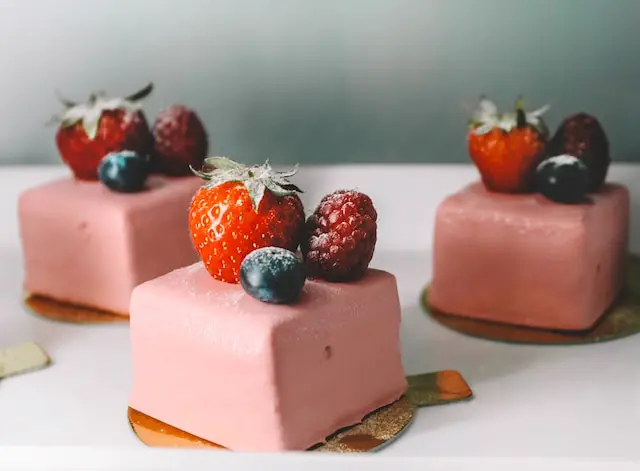Discover the science behind your cake’s perspiration and learn how to prevent it.
Imagine opening your fridge, eagerly anticipating a slice of your delicious homemade cake, only to find it covered in beads of moisture. It’s a disheartening sight, leaving you puzzled and wondering why your cake is sweating in the fridge. Fear not, for this article will unravel the mystery and provide you with expert tips to prevent this pesky problem. So, let’s dive into the science behind cake sweating and uncover the solutions.
Condensation: The Culprit
Condensation occurs when the cake’s temperature is colder than the surrounding air. When you place a freshly baked cake in the fridge, its internal temperature drops, causing the moisture inside the cake to cool down as well. As a result, when you take the cake out of the fridge and expose it to a warmer room, condensation forms on its surface.
The Warm and Cold Dance
- Moving a cake from the fridge to a warm room causes condensation. It’s like taking your cake on a wild roller coaster ride of temperature changes.
- The cake goes from a cool environment to a warm one, shocking it and resulting in droplets forming on its surface.
Removing Excess Moisture
If you find your cake sweating, don’t panic. There are simple steps you can take to remove that excess moisture:
- Gently touch the cake with a paper towel to absorb the moisture. Just a light touch will do the trick.
- Repeat the process until the cake surface feels dry. Remember, patience is key here.
Avoid Refrigerating Iced Cakes
While refrigeration might seem like a convenient way to store your cake, it’s not recommended for iced cakes. The cold temperature in the fridge can have some unfortunate effects:
- Refrigerating iced cakes makes the icing soft and gooey. Nobody wants a melted masterpiece!
- The moisture in the fridge can also cause the colors in the icing to bleed or fade, resulting in a less visually appealing cake.
Proper Storage Techniques
To keep your cakes in prime condition, it’s essential to follow some best practices for storage:
- Before refrigerating, wrap unfrosted cakes in plastic wrap to prevent them from drying out. Nobody wants a dry cake!
- For frosted cakes, chill them in the fridge for about 15 minutes to firm up the icing. Then, loosely wrap the cake in plastic wrap to retain moisture without causing condensation.
The Aftermath: Sweating Cake
So, you’ve chilled your cake, and now it’s time to serve it. But as you bring it out of the fridge, you notice that it’s sweating again. What’s happening here?
- Cakes become too cold in the fridge, and when brought back to room temperature, they sweat due to the temperature difference.
- As the cold cake meets the humid room air, condensation forms on its surface, leading to the dreaded cake sweat.
Preserving Moisture
To keep your cake moist and free from sweating, follow these guidelines:
- After removing a cold cake from the fridge, tightly wrap it in plastic wrap to create a barrier against the humid air. It’s like giving your cake a cozy winter jacket.
- By wrapping the cake tightly, you retain its moisture, preventing it from losing water content and becoming dry.
Serving Temperature
Now that you’ve successfully avoided cake sweating, it’s time to savor your creation. But hold on, there’s one more thing to consider:
- Refrigerate the cake for 1-3 hours before serving. This allows the flavors to meld together and enhances the cake’s taste.
- Once chilled, remove the cake from the fridge and let it sit at room temperature for optimal flavor and texture. This process usually takes around 1-2 hours.
- It’s important to note that tiered cakes require longer to warm up. Allow them to sit for at least 2 hours before serving to ensure the entire cake reaches room temperature.
Conclusion
Cake sweating in the fridge may be an unwelcome surprise, but understanding the science behind it can help you prevent this issue in the future. Remember, condensation occurs when the cake’s temperature is colder than the surrounding air, so take care to manage the temperature changes. By following proper storage techniques, removing excess moisture, and allowing the cake to warm up before serving, you’ll ensure a beautiful, moist, and sweat-free cake that delights your taste buds and impresses your guests. Happy baking!
